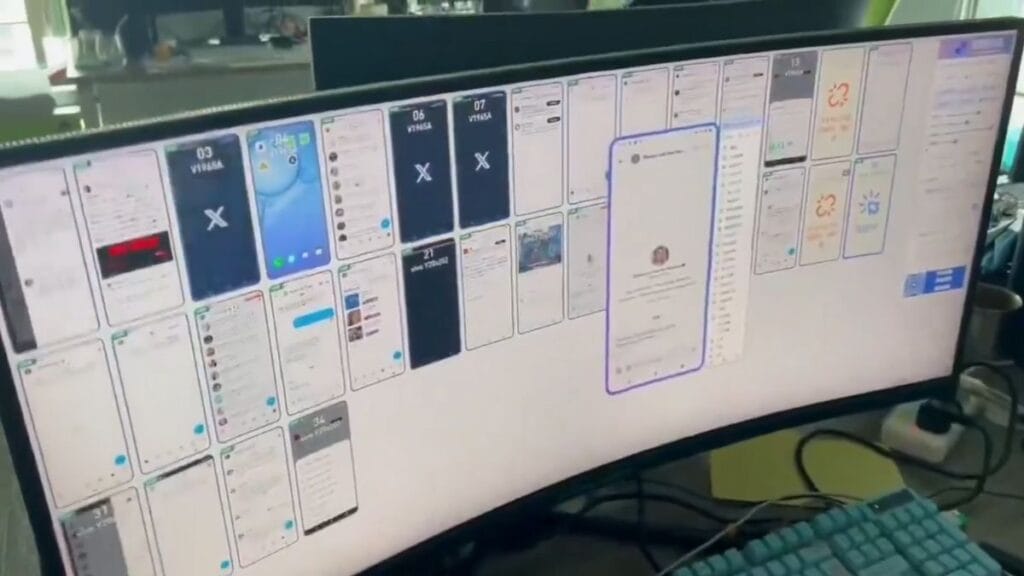The recent string of partnerships between NVIDIA and major automakers like General Motors signals a shift in the self-driving car race. While news outlets have covered the basic facts of these deals, they’ve missed the deeper story. This isn’t just about chip sales or software licenses – it’s about who will control the neural backbone of our future transportation networks.
The Hidden Architecture of NVIDIA’s Automotive AI Stack
NVIDIA’s automotive technology stack is more than just a collection of chips. It’s a carefully crafted system that works together to make self-driving cars possible.
At the base level sits the Drive AGX hardware platform. This is the in-vehicle computer that processes all the sensor data from cameras, radar, and lidar. But the real power comes from the more advanced Drive Orin and Drive Thor systems-on-chip (SoCs).
Drive Orin can process up to 254 trillion operations per second, which is about 8 times more powerful than the previous generation. This isn’t just a small step forward – it’s a giant leap in processing power that makes more complex AI models possible.
Drive Thor takes things even further. It’s built to handle the Transformer architecture that powers the most advanced AI models today. This means it can run large language models and other AI systems right in the car, without needing to send data to the cloud.
The brain of the system is DriveOS, NVIDIA’s safe and real-time operating system. While most articles gloss over this component, it’s actually one of the most critical parts. DriveOS is built with safety as a primary concern, not as an afterthought. It manages all the AI tasks and makes sure they happen in real-time, which is vital when a car is moving at 70 miles per hour.
Then there’s the new Halos system. This is NVIDIA’s push into safety AI, which works like a guard rail for autonomous systems. It’s designed to catch problems before they happen and prevent accidents.
What makes this stack truly unique is how it all works together. The hardware, software, and AI models are all built to talk to each other without lag or confusion. This tight integration is what sets NVIDIA’s approach apart from competitors who often cobble together parts from different sources.
The True Cost Equation for Automakers
One aspect is the real cost calculation for automakers. When GM, Toyota, or Hyundai sign deals with NVIDIA, they’re not just buying chips – they’re making a strategic bet on their future.
The choice for automakers comes down to this: build your own AI stack from scratch, or buy NVIDIA’s. Building in-house autonomous systems can cost billions of dollars and take years, with no guarantee of success. Just ask GM about their experience with Cruise, which burned through cash before being shut down.
By partnering with NVIDIA, automakers get access to proven technology that’s already been tested and refined. They can focus on what they do best – building cars – while letting NVIDIA handle the complex AI systems.
But there’s a catch. While using NVIDIA’s tech is faster and less risky than building your own, it also means giving up some control. When multiple car companies use the same NVIDIA systems, it becomes harder for them to stand out. The real battle may shift from who has the best autonomous system to who uses that system in the most clever and useful ways.
The subscription model for driver assistance features also changes the math. GM expects its Super Cruise technology to bring in $2 billion in annual revenue within five years. If NVIDIA’s tech helps them reach that goal faster, the partnership quickly pays for itself.

The Competitive Landscape Reshuffled
NVIDIA’s moves are reshaping the entire self-driving car market in ways that aren’t immediately obvious.
First, these partnerships put pressure on specialized autonomous vehicle companies like Waymo, Aurora, and what remains of Cruise. When major automakers partner directly with NVIDIA, it raises questions about the long-term value of these AV startups.
Second, it creates a clear divide in the market. On one side are companies like Tesla that build their own AI systems from the ground up. On the other side are traditional automakers who partner with NVIDIA. In the middle are companies like Mobileye (whose stock fell 3.5% after the GM-NVIDIA announcement) that offer specialized autonomous driving solutions but don’t have NVIDIA’s broad AI expertise.
This reshuffling creates winners and losers. The winners are likely to be automakers who can quickly and effectively integrate NVIDIA’s technology into compelling products. The losers may be companies that are too slow to adapt or those that bet big on developing their own systems that can’t keep pace with NVIDIA’s rapid innovation.
The Hidden Technical Challenges
While the press releases make the partnerships sound simple, the reality is much more complex. Integrating NVIDIA’s technology into vehicles involves overcoming several technical hurdles that aren’t getting enough attention.
First, there’s the power consumption challenge. NVIDIA’s high-performance AI chips need a lot of electricity to run. This is a particular concern for electric vehicles, where every watt of power used for computing is a watt that can’t be used to extend driving range.
Second, there’s the data problem. Self-driving cars generate massive amounts of sensor data that needs to be processed in real-time. Moving this data around the vehicle’s internal networks requires careful design and high-speed connections.
Third, there’s the challenge of thermal management. Powerful chips generate a lot of heat, which needs to be dissipated effectively, especially in the confined spaces of a vehicle.
Fourth, there’s the validation and verification challenge. Safety-critical systems in cars need to be tested extensively before they can be deployed. This testing process is complex and time-consuming, and it’s an area where NVIDIA’s simulation platforms like Omniverse can help.
Automakers who understand and address these challenges early will have a significant advantage in bringing advanced autonomous features to market.
The Long View: Beyond Self-Driving
The most forward-looking aspect of these partnerships is how they extend beyond just self-driving cars. NVIDIA’s technology is being used throughout the automotive value chain, from design to manufacturing to the final product.
GM’s use of Omniverse to create digital twins of its factories is a perfect example. By simulating factory operations in a virtual environment, GM can test new production processes without disrupting actual manufacturing. This can lead to significant cost savings and faster innovation.
The use of AI in manufacturing also points to a future where cars are built more efficiently and with fewer defects. AI systems can spot patterns and problems that human inspectors might miss, leading to higher quality vehicles.
Looking even further ahead, the partnerships hint at a future where cars are just one part of a broader AI-powered transportation ecosystem. NVIDIA’s work with robots, wireless networks, and other technologies suggests a world where cars communicate with each other, with infrastructure, and with other modes of transportation to create a seamless travel experience.
What This Means for the Future of Driving
The real story behind these partnerships is about the future of transportation. NVIDIA’s technology stack is becoming the foundation for a new kind of automotive industry, one that’s as much about software and AI as it is about engines and chassis.
For drivers, this means cars that are not just safer but also more personalized and adaptive. AI systems can learn your preferences, adjust to your driving style, and even predict your needs before you’re aware of them.
For automakers, it means a shift in how they think about their products. Cars are becoming platforms for services, with features that can be updated and improved over time through software updates. This creates new revenue streams and opportunities for ongoing relationships with customers.
For society as a whole, it means a gradual transformation of our transportation systems. As more vehicles incorporate advanced AI capabilities, we’ll see changes in traffic patterns, parking needs, and even urban design.
The partnerships between NVIDIA and automakers like GM are just the beginning of this transformation. The real impact will be felt in the years ahead, as these technologies mature and become more widespread.
The road to fully autonomous vehicles is longer and more winding than many early predictions suggested. But with NVIDIA’s technology and these new partnerships, the journey is well underway. The question isn’t if we’ll reach the destination, but who will get there first and what the world will look like when we arrive.
Are you ready for this AI-driven automotive future? The technology is racing ahead, and now is the time to start thinking about how it will change the way we drive, commute, and travel.


